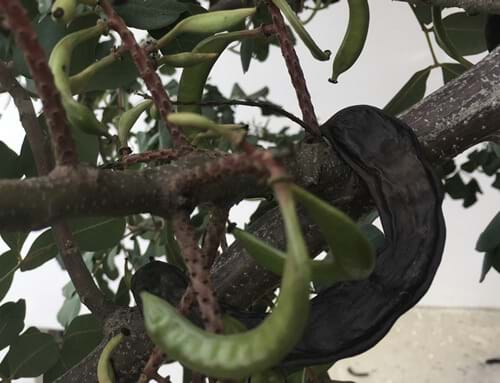The carob is one of the most prevalent trees growing in the maquis, the shrubby landscape of evergreens common to the Mediterranean coast. This ancient species predates the Ice Ages and originated in Asia Minor and northern Africa. Indeed, the tree was named ‘kharrub’ in Arabic, and that name has been adapted into other languages as its growth spread across the western Mediterranean (the early use of its seed as a standard of measurement led to the term ‘carat’, too). Cypriots have long used the seed pods, shaped like a flattened crescent moon, to make sweeteners. Teratsomelo, or carob honey, is made in the village by grinding the seed pods, placing the powder in baskets, and then submerging the baskets in cold water. Sugar water is drained from the baskets, simmered, and thickened into a syrup commonly used in desserts here. Though important to the local cuisine, the carob also played a critical role in the economic development of Cyprus. From the 1890s to the 1960s, carobs were widely cultivated for export: two million trees produced some 50,000 tons per annum. Carobs were such an important source of foreign capital that they were called ‘black gold.’ Mills processed the pods, producing cubes for feeding livestock, flour for making confections, and seeds for use in the manufacture of cosmetics, paper, film, and dyes. You can still see traces of the once mighty trade in the stone warehouses lining harbours like Latchi and at the Carob Mill Museum in Limassol.
